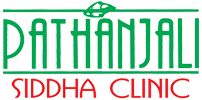Siddha Medicine
 |
Siddha Medicine |
Siddha medical system is widely practiced in southern part of India especially in Tamil Nadu. It also spread to the south Asian countries such as Sri Lanka. Siddha term derived from Sidhhi, which means the attainment of physico-spiritual strength as well as supernatural powers, and the persons who attained Siddhi are known as Siddhars. The medical system evolved by the Siddhars is called Siddha Medicine. It sustained since many centuries due its well efficacy of herbo-mineral products used in this medical system. Siddhi, gaining in Astahsiddhis
(eight great powers) is basic criteria of becoming Siddhar. There are
many Siddhars in Tamil Nadu but among them great eighteen siddhars are very famous for their contribution in the development of Siddha Medicine. Among the eighteen siddhars Agasthyar is the first person to be knows as Father of Siddha Medicine.
However traditionally and religiously it is believed that Lord Shiva is the first person to taught the Siddha Medicine to Parvathy, consort of Shiva. Murugan son the Lord Shiva learned the Siddha Medicine
from his mother Parvathy. Due to large suffering from diseases by the
people Agasthiar requested the Muruga to teach medical science for
giving relief to people. Therefore Agasthiar become the first person to
learn and practise the Siddha Medicine in this world.
Physiological and Pathological activites are depended upon the tridhosha
theory. Vatam, Pittam, and Kabam (Kapham) are three bodily humors which
control the physiological activities when they are in normal equibrial
state. Due to extrinsic and intrinsic factors if they are deranged they
cause the disease producing humors. Bringing these deranged tridoshas
into normalcy is the prime criteria for maintenance of health.
Further our human body is made up of
physical materials such as muscles, bones etc. Basically these materials
are made up of by Panchabhutangal, (five elements, viz Akash, Vayu,
Agni, Jala, Prithvi) and Sapthadhatugal (viz. Ooneer, Chenner, OOn,
kozhuppu, elumbu, majjai, sukkilam). Due to the vitiation caused by
various factors like incompatible food, external injuries,
etcmunruthoshangalaffect on the body and produce diseases. These
diseases can be diagnosed by various techniques which include Nadi
(pulse), Neer (urine), Malam (stool), Thodal (through touch /
palpation), Kan (eyes), Kural (sound), Varnam (color), and Na (tongue).
In Siddha Medicine,
treatment is classified into three types which include Devamaruthuvam
(spiritual and devine intervention), Manidamaruthuvam (through rational
medicines) and Asuramaruthuvam (surgical methods). Bringing the vitiated
thoshas into normalcy through treatment includes medical intervention,
surgery, etc. Medicines are prepared by using produce
of Thavaram (herbs), Thadhu (mineral) and Jangamam (animal origin).
Mineral products include Uppu. Pashanam, Rasam, gandhakam, Uparasam,
loham etc.
Siddha Medicines are
prepared according to need of treatment. Some of them are used for
external only and some of them are for internal usage. Churinam,
kudineer, ennai, nei, lekiam, pasmam, chindoorametc are typical Siddha Medicines used for internal medication and external applications. Siddha Medicine
also advocates a special therapy knows as Varma procedure which is
mainly used in injury caused diseases. In accordance with Siddha, there
are 108 varmam spread all over human body, which are classified into
Paduvarmam, Thoduvarmam, Thattuvaramam, Thaduvarmam, Nakkuvarmam, and
Nokkuvarmam. PractisingVarmakkalai requires high skill and this should
be learnt through knowledgeable siddhars only.


No comments :